Antique and contemporary artworks and objects may require specialist care if they feature metallic areas, or if they are entirely made from this material. Metals may tarnish and degrade if they face accidental or environmental damage, much of which can be avoided with the correct atmosphere and preservation techniques.
This antique metal restoration and care guide includes information from our conservation team, who have expert knowledge of metallic antiques and contemporary designs.
 Above: a detail of silver decoration and jewels on an antique book cover
Above: a detail of silver decoration and jewels on an antique book cover
Environmental conditions for metal antiques and sculptures
Metals objects are more resistant to environmental factors than other objects such as paintings, paper or textiles. However they can be affected by moisture and salts, which is why keeping objects in a clean and dry environment is key to prevent deterioration.
Most atmospheric corrosion can be prevented if the relative humidity is below 65%. However, if an object is starting to corrode a drier environment will help slow this down. Keeping the humidity levels stable is also important for stopping corrosion. To avoid humidity fluctuations and damp areas try to keep objects away from cold spots such as windows and vents.
 Above: examples of metal sculptures including a bronze and silver busts and a silver reliquary
Above: examples of metal sculptures including a bronze and silver busts and a silver reliquary
If you have objects displayed in a closed case or cabinet, silica gel can be used to draw out moisture from the air. You often get sachets of silica gel in new bags, shoes or cases – these can be placed discreetly in the cabinet.
The way objects are displayed can also speed up deterioration. If you have a metal object displayed on a wooden or painted shelf and you notice the bottom of it starting to corrode it’s likely the surrounding materials are the cause of this. This is because wood and paint can emit acidic components which attack the metal. To protect the object you can cut a piece of inert plastic film such as polyethylene (shopping bags and freezer bags are usually made of polyethylene) to the shape of the base and place the object on top of this.
 Above: the ‘S-Printing Horse’ in Heidelberg designed by sculptor Jürgen Goertz is made of stainless steel and aluminum
Above: the ‘S-Printing Horse’ in Heidelberg designed by sculptor Jürgen Goertz is made of stainless steel and aluminum
How to deal with corrosion
Corrosion can be either stable or active. Stable corrosion can be beneficial, whereas active corrosion is unstable and will continue to eat into the surface and further damage the object.
Stable corrosion is often better known as a tarnish or patina. Although this can make the object look duller it acts as a protective barrier on the surface, stopping the lower layers of metal from being affected by harmful components in the atmosphere. If your object has a tarnish or patina it’s better for this protective layer to stay.
 Above: examples of corrosion and decay on ancient Greek and Roman statues
Above: examples of corrosion and decay on ancient Greek and Roman statues
Active corrosion is an ongoing process and without intervention will continue to get worse. This type of corrosion often appears as flaking or powdering of the surface. Corrosion looks different on each type of metal or metal alloy. Active corrosion deposits are generally quite brightly coloured, whereas stable corrosion is generally a thin, even layer of duller discolouration across the surface. A thin patina on silverware will appear iridescent and a thicker layer can appear almost black. Brass and copper objects also form a black patina over time. Active corrosion on bronze, brass and copper appears blueish green. Active corrosion on iron and iron alloys appears relatively bright orange in comparison to the dark reddish-brown colour of stable corrosion.
How to handle metal antiques and sculptures
One common cause of metal deterioration is contaminants transferred onto metal objects during handling. Our skin naturally produces moisture, salts and oils which can be transferred onto the surface when touched. These sit on the metal and over time can cause corrosion and etching of the surface.
Nitrile gloves or clean cotton gloves (washed before first use) are recommended when handling metal objects. Some objects are plated with a thin layer of metal different to their core. The layer of plating is usually very thin and therefore more susceptible to damage from handling.
 Above: a selection of historic metal plates, bowls, chalices, and a jug or ewer
Above: a selection of historic metal plates, bowls, chalices, and a jug or ewer
How to clean metal antiques and sculptures
Uncoated metals can be sensitive to moisture, therefore cleaning with anything water based can cause corrosion. Other household cleaners such as furniture polish and cleaning spray contain chemicals and ingredients which can also damage metals over time. Even commercial metal polishes can cause abrasions and remove protective coatings.
The safest way to keep your important metal pieces clean is by using a soft brush to clean off surface dust and dirt weekly. You can brush the dust into a vacuum nozzle to stop it resettling on the object. Hold the vacuum slightly away from the object (about 15cm) so that it doesn’t knock the surface or draw any loose pieces of metal into the hose.
 Above: a silver 16th century celestial globe with a detail of the engraving
Above: a silver 16th century celestial globe with a detail of the engraving
If your object has small, hard to reach crevices where dust gathers you can use a dry cotton swab to clean in these areas. You can also rub lightly with a soft dry cloth, but do this sparingly as rubbing over any hard particles of dirt may scratch the surface. If you touch the surface while moving or cleaning it you can use a soft cloth and a tiny amount of white spirit to clean the fingerprints off quickly.
Caring for outdoor metal antiques and sculptures
Outdoor sculptures are by nature exposed to more extremes than indoor objects – rain, soil, snow, large temperature fluctuations. Cleaning a few times a year can help preserve them by removing dirt, bird droppings, and atmospheric pollutants. The loosest dirt can easily be removed by rinsing them with water from a garden hose. For more stubborn dirt a soft sponge can be used with a clear, unscented washing up liquid weakenly mixed with water. The detergent needs to be rinsed off afterwards with clean water, preferably distilled or deionised water. If your sculpture has any loose pieces, flaking, or active corrosion these cleaning methods may not be appropriate as they could exacerbate the problem.
 Above: an outdoor sculpture which has partly deteriorated over time
Above: an outdoor sculpture which has partly deteriorated over time
Some objects which are displayed outside, especially bronze sculptures and those with areas of corrosion will benefit from a protective coating. Our conservators can give you advice on whether this is appropriate for your object.
Metal antique and sculpture restoration
Metal can be susceptible to damage from inappropriate cleaning or attempted repairs, so some deterioration is best left to be treated by our trained conservators.
A conservator can also stabilise or reattach loose and broken pieces with adhesives and methods specially designed for this purpose.
If you notice flaking of the surface or coating, active corrosion, pitting or erosion there may be issues with the object or environment which can be hard to pinpoint. A conservator can help remedy these issues by removing corrosion safely, applying a protective coating if necessary, and providing targeted advice on how to prevent these issues reoccurring.
Removal of harmful corrosion and thick surface dirt can be carried out carefully by a conservator without risk of damaging the surrounding metal. Removing these layers can reveal the original design and bring your object back to its best.
Contact our team for further information
If you have an antique, sculpture, or any other artwork with metallic elements, please contact our team to discuss any concerns you may have.
You can get in touch by emailing [email protected] or calling us on 0207 112 7576

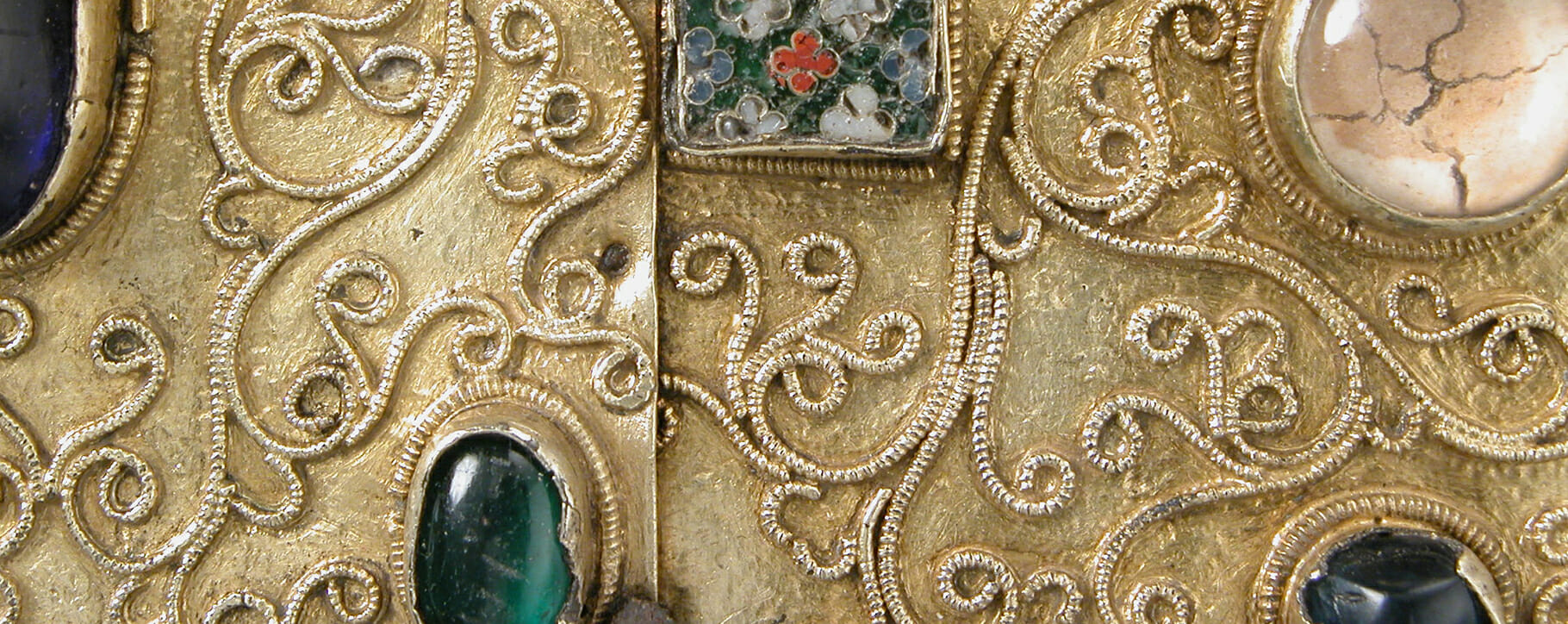 Above: a detail of silver decoration and jewels on an antique book cover
Above: a detail of silver decoration and jewels on an antique book cover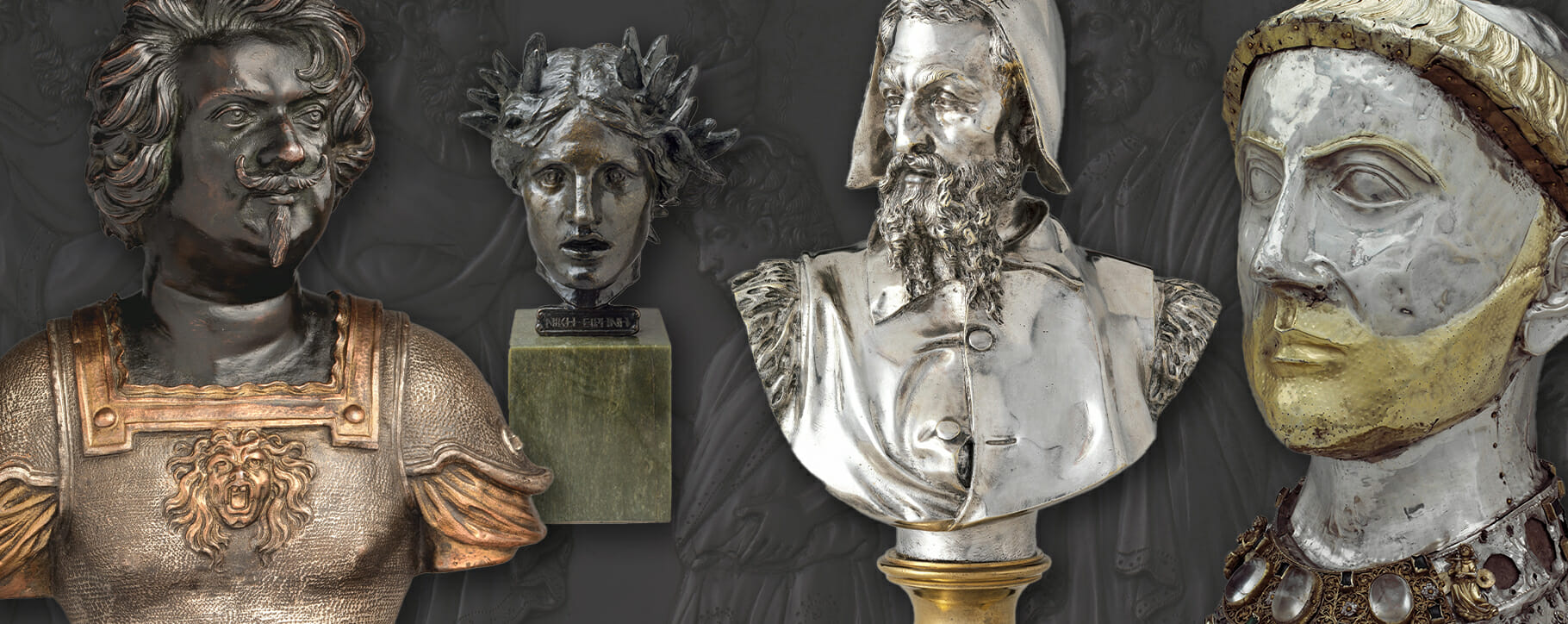 Above: examples of metal sculptures including a bronze and silver busts and a silver reliquary
Above: examples of metal sculptures including a bronze and silver busts and a silver reliquary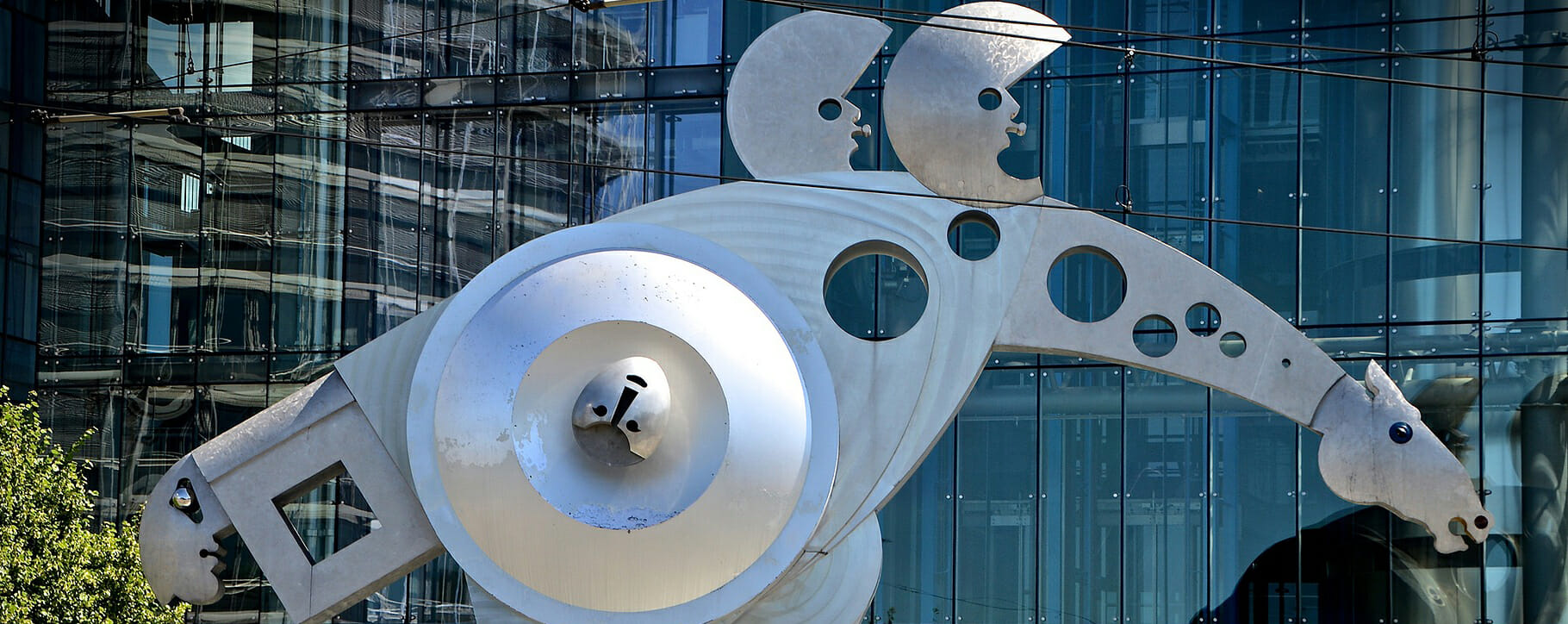 Above: the ‘S-Printing Horse’ in Heidelberg designed by sculptor Jürgen Goertz is made of stainless steel and aluminum
Above: the ‘S-Printing Horse’ in Heidelberg designed by sculptor Jürgen Goertz is made of stainless steel and aluminum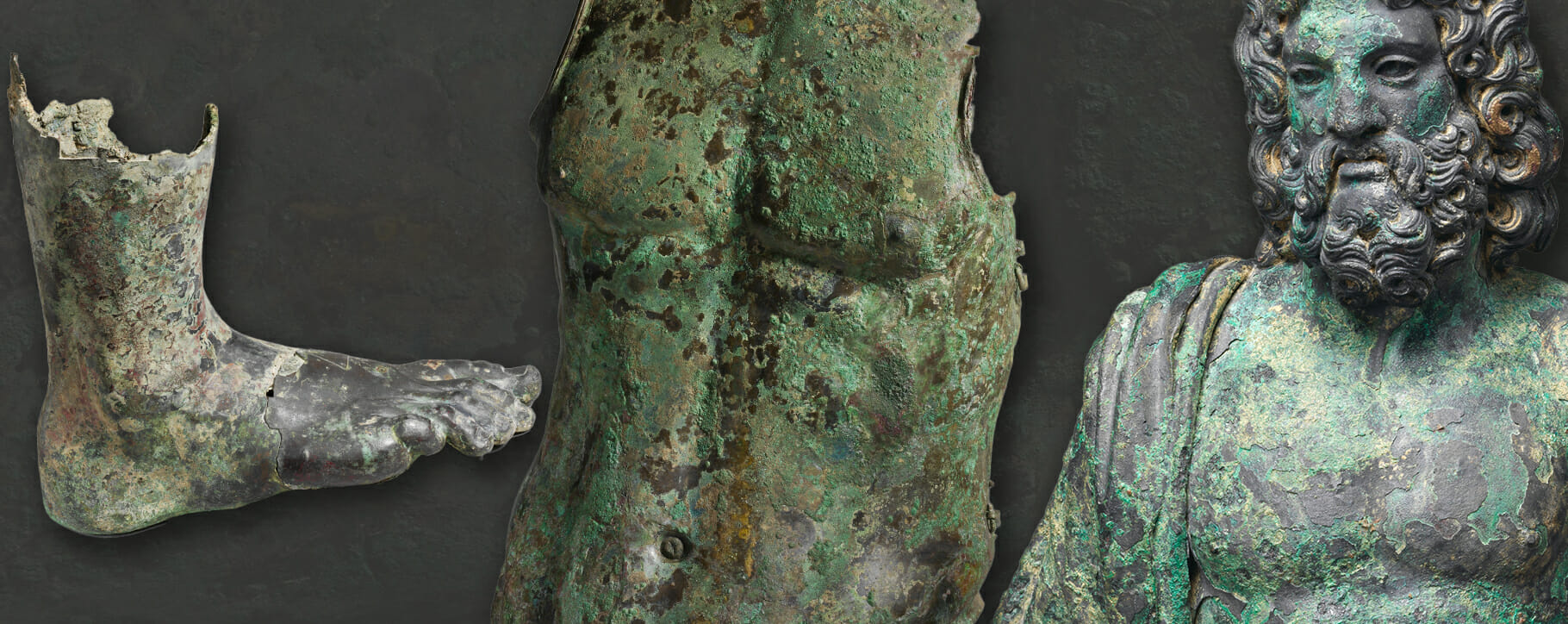 Above: examples of corrosion and decay on ancient Greek and Roman statues
Above: examples of corrosion and decay on ancient Greek and Roman statues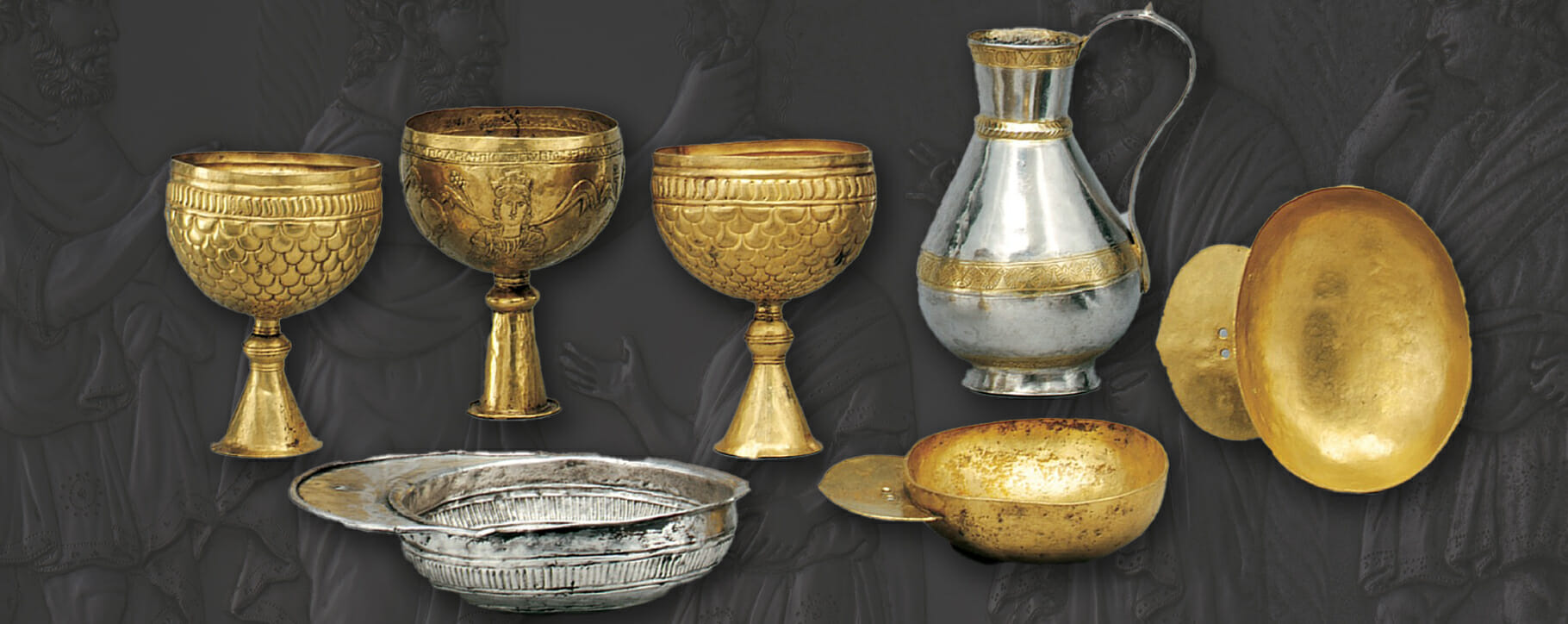 Above: a selection of historic metal plates, bowls, chalices, and a jug or ewer
Above: a selection of historic metal plates, bowls, chalices, and a jug or ewer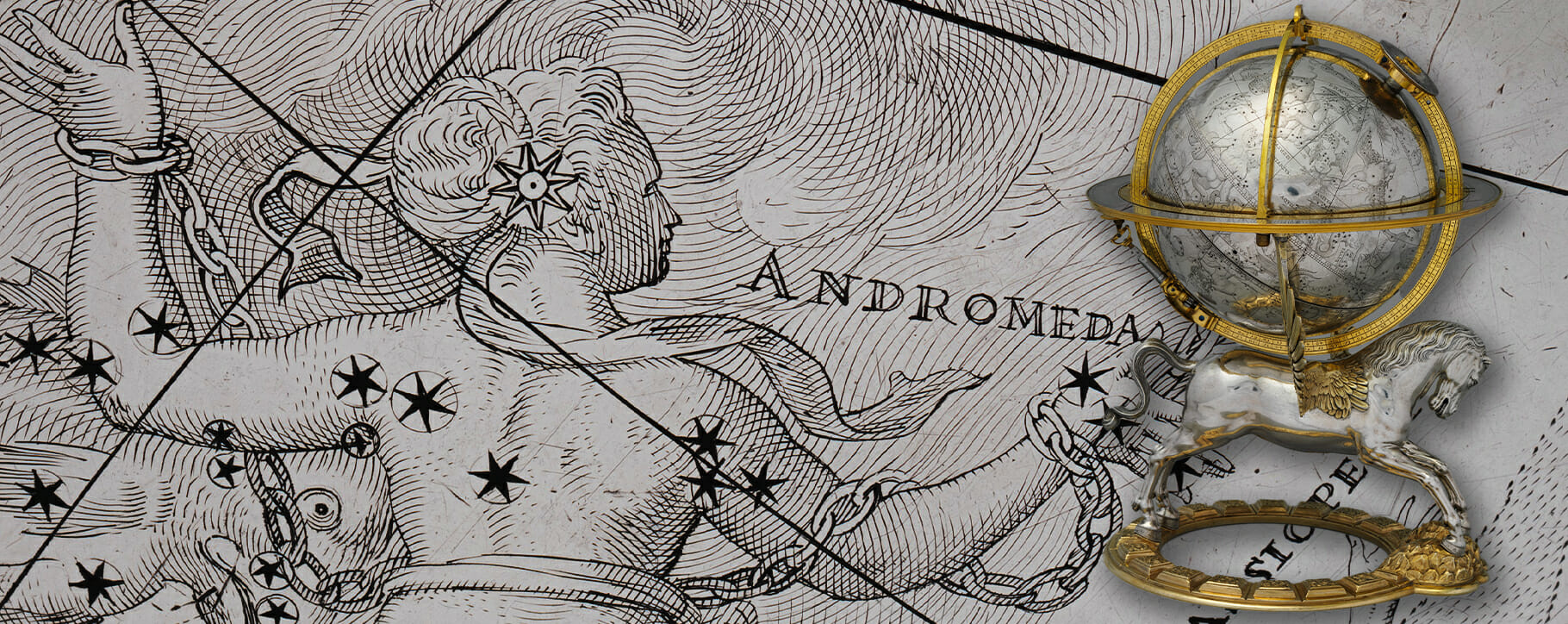 Above: a silver 16th century celestial globe with a detail of the engraving
Above: a silver 16th century celestial globe with a detail of the engraving Above: an outdoor sculpture which has partly deteriorated over time
Above: an outdoor sculpture which has partly deteriorated over time




